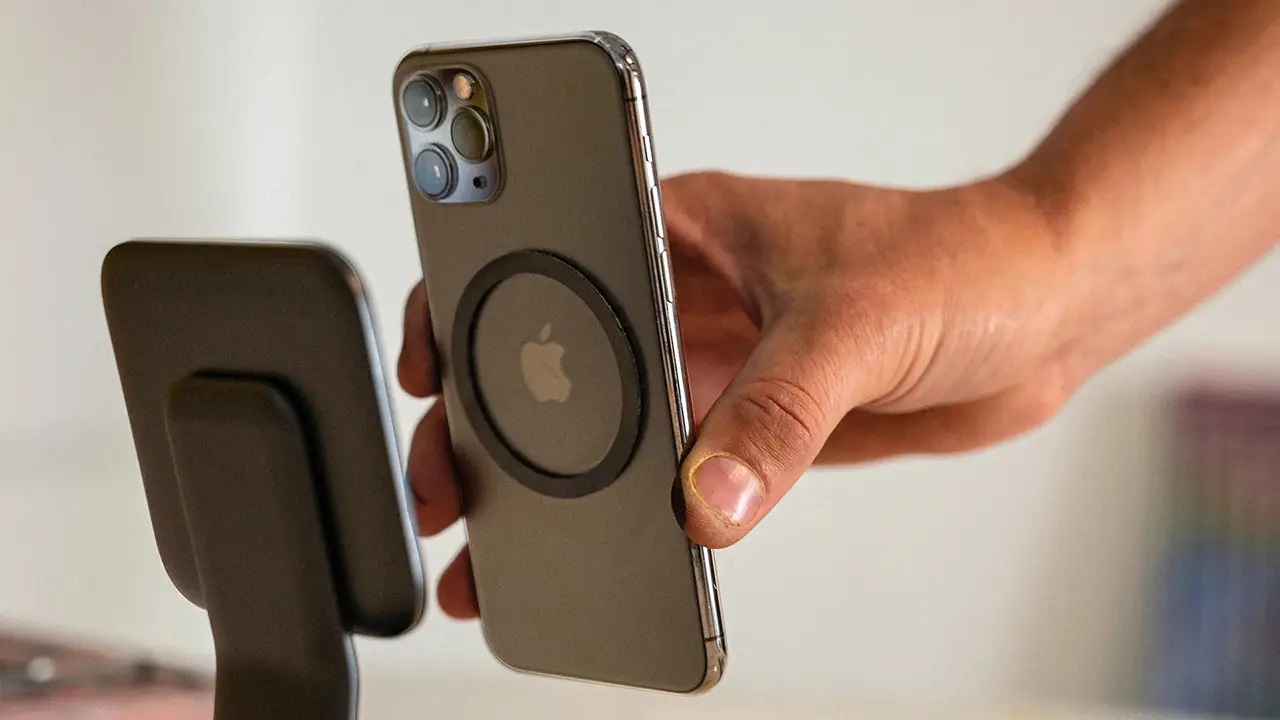What if charging your phone took less time than brushing your teeth? A new study published in Proceedings of the National Academy of Sciences could very well hold the key to a next-gen charger capable of recharging your phone in just 60 seconds.
Researchers from the University of Colorado Boulder have discovered a new cutting-edge technique that could make it possible to charge devices almost instantaneously. This would make charging phones, laptops, and even electric cars much more efficient and convenient. The foundation of the new technique is based on new insights into how ions move through supercapacitors.
The key, one of the researchers explains in a press release, is to make the movement of the ions more efficient. By doing this we can make the charging and release of energy much faster, allowing for that next-gen charger that is capable of boosting your phone’s charge from 0 to 100 in just a minute, or maybe even less.
To make this discovery, the researchers looked at the movement of ions through a complex network of interconnected pores running through the supercapacitor. Their findings have helped modify a scientific law that researchers have used to govern electrical currents for more than 175 years. This law, called the Kirchhoff circuit law, describes the flow of electrons in a simple loop of wiring in most classes.
However, when inspecting the ions and their movement, the researchers found that the ions move fundamentally differently at the intersections of tiny nanoscale pores when compared to how electrons move near the same locations. Further observations helped them determine that these movements are different from what Kirchhoff’s law describes. This doesn’t completely throw out the old laws, though, as they still provide valid explanations for how electronics flow within conventional electronic circuits.
However, to create a next-gen charger capable of taking full advantage of the movements of the ions, we have to look at things different. This, the researchers say, is “the missing link” that they have been looking for. Creating more efficient energy storage has been a long-term goal for many engineers.
We’ve seen water-based batteries capable of storing more than traditional lithium-ion batteries. Still, a method that lets us charge our batteries almost instantly would remove a lot of the hindrances surrounding the wider adoption of things like electric cars. Not to mention how much more convenient a next-gen character would make charging laptops, phones, and other electronic devices.
I don’t understand. Is this a new material, membrane, electrolyte, way to deliver electricity to the battery, or something else entirely? Will this require an internal change to future batteries or something external? Also, is this for Lithium-Ion batteries only or other batteries that use ions too? And finally, how does this impact lifetime of the battery? Fast charging already has impact on batteries for charging in 30 minutes to an hour. The effect of just 60 seconds (a 30 fold increase) could be substantial…
The original research was regarding supercapacitors, not Lithium-ion. Based on the PNAS preview it seems it has to do with changing the design of a supercapacitor to increase charge rate.
I can’t even imagine the heat generated from charging a battery in 60 seconds. Gonna get branded by my bezel
I remember when you could fully charge your battery in under 30 seconds.
REMOVABLE BATTERIES BITCH
Well, that’s not really charging, now is it?
I like how they chose a phone wireless charging for their “super fast and efficient” charging article.
Who tf considers their teeth clean in 60 seconds?
Edit: “Less time than it takes to brush your teeth…” I should have some coffee.
Reminds me of The Office when Michael Scott implies he brushes his teeth faster than a guy in a wheel chair lol
I look forward to charging my phone 60 seconds before leaving the house 👍
Figured I’d do the math on the power required.
In the article, they show a iPhone 15 Pro, which has a 3274 mAh battery, so let’s go with that. Assuming a 3.7 V battery and a 1 minute charging time, that’s
3274 mAh × 3.7 V / 1 min ≈ 727 W.They might just as well sell PC power supply to USB adapters then.
How about we make phones repairable. Like maybe removable batteries like in the fairphone.
posted from my iPhone
How about both?
supercapacitors
deleted by creator
Never mind phones, what about cars?
So an electric car might hold 100 kWh. To charge that in 1 minute you would need 6000 kW of power, or 6 MW. Typical “rapid” chargers today do 350 kW and these are the kind that are difficult to find. A nuclear plant makes around 1,000 MW so if you had 166 cars charging at once you would overload one.
From the article
This would make charging phones, laptops, and even electric cars much more efficient and convenient.
Yeah but I doubt that’s actually the case based on the physics involved. We need fast charging cars way more than fast charging phones.
Why do you feel that the researchers are wrong about their physics research?
The researchers who wrote the paper only mentioned possibly applying the tech to very small things like wearables and Iot applications where a large capacitor might be relevant. It’s the journalist summarizing it that makes the wild claims about phones and cars, which don’t tend to use capacitors for a bunch of reasons, not least of which is that they tend to be physically twenty times larger than a given battery of the same capacity.
If people are able to deal with batteries anywhere near that large, then I’d imagine most of them would choose twenty times the battery life/ range over being able to charge fast enough overload a wall outlet/ small power plant.
More of an actual comment, good. More efficient capacitors in both speed and heat certainly helps in charging devices of all sizes. Of course it wouldn’t be charging large batteries in seconds, but that doesn’t mean no improvement.
No, it doesn’t effect devices of all sizes, only devices that might use this specific bulky capacitor, all other devices will show exactly zero improvement because there is no real point to mixing capacitors in with a large battery. Being able to quickly get three minutes of charge per whole hour of battery capacity you replace with capacitors just isn’t that useful because you might as well just stay plugged in for an extra few minutes and get the same charge plus that extra hour before needing to find a charger at all.
As for EV’s the problem is even more pointless, as being able to go a half mile the street from a charger massive enough that it can output a small power plants worth of electricity is similarly to specialized of a use case to be worth the loss of range and greater degradation of the rest of the battery.
Almost every electrical system on the planet uses capacitors. Especially high power systems. Of which evs are.
“No real point in mixing capacitors in with a large battery” ?? That’s done literally all the time for both filtering and for intermittent high power output. Like when I say almost every electrical system uses caps, I mean almost every electrical system.
Email the researchers with your complaints
This does not sound sustainable at all.
So what are we looking at, the next 5 years?
No, never. Current charging rates already get close to thermal constraints. Hitting those charging rates either requires accepting much lower power density or using way more metal per cell. This research might inform design changes to improve charging rates, but we’ll never see high capacity batteries charging in a minute.
The researchers know this and only mention wearables and iot devices applications. The article author erroneously makes the leap to high energy density devices.
If you don’t care about energy density at all, ceramic capacitors can already charge and discharge in microseconds.
Well this discovery is about super capacitors and not batteries.
It sounds like this is completely clickbait article, bordering on misinformation.
…and explode them in the next 60
No, most phones are allready safe to leave on your charger all night.
probably because they currently don’t get stuffed a bucketload of crackly juice* in 60 seconds
*I don’t, in fact, know how electricity really works
More like, “Shoving it in so fast it makes the sauce in the battery super heat and create a bomb”
Been charging my phone overnight for years. Battery health is 100% and I never have to worry about charging.
Impossible for battery health to be at 100% after years. May still be working great, but not 100%.
Battery degradation is ridiculously unpredictable. I’ve seen 100 cycle batteries at 75% and 2500 cycle batteries over 90%. I only dealt with like 5 MacBook models
Agreed, but not a “charge overnight for years” but no degradation at all.
Depending on what battery protection modes are in play, many have smart charging or other features designed to prolong life. Also a fair few batteries come out with greater than design capacity from the factory. It’s called a design capacity and not an absolute capacity for a reason. A phone battery that left the factory at 110% could conceivably still be at or above 100%.
Fyi it’s not overnight charging that’s the issue either, it’s charging to 100%. What one device consider 100% varies and devices will essentially lie to you about it. 4.2V is normally considered 100% full for Lithium Cobalt Oxide batteries yet some devices push higher than this while others skirt under to pad capacity and cycle life respectively. It’s about tradeoffs.
Consider that the energy output of a 12-gauge shotgun is approximately 4500 Newton-meters and, from personal experience, can rotate a first-gen iPad at an extrapolated 240 rpm (extrapolated as this proved difficult to sustain). That gives us an equivalent of 113 kW! A modern ipad would only need about 13 kW to charge in one second.
So, one shotgun shell could easily charge yours and 7 of your friends ipads instantaneously, although the results are difficult to appreciate.
I feel the Doc in Back To The Future vibe.
Marty! It’s your children! The little bastards won’t stop playing Ska-booby toilets!
This sounds at least 10 years from an actual product.
Mostly due to lobbying?
Mostly due to further research and then product development and then safety testing and certification?
I was implying that it could be <10 years if there was no opposition to the new tech.
!remindme 10 years
Stories like this have been posted every so often to reddit. I’ll believe this is possible when I see it available in consumer electronics (and not just lab conditions).














